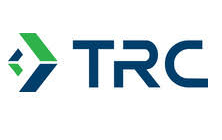
Denise Brinley, vice president, ESG and climate advisory group at TRC Companies, will participate in a panel discussion on the energy transition and decarbonization at Environment Analyst's Global Business Summit (27-28 June, Chicago).
We spoke with Denise to get an early glimpse of what she’ll be discussing at the event.
What is the greatest challenge in delivering or completing the energy transition now underway? And the greatest opportunity?
DB: The greatest challenge to delivering the energy transition is delivering the scale and magnitude of clean energy solutions that are needed to maintain the global temperature increase below 1.5 degrees Celsius. The fossil versus anti-fossil sentiment has constrained real progress in meeting the challenges of decarbonization and has limited our ability to meet in the middle and create necessary pathways to innovation. The true key to unlocking the full energy transition centers around creating a range of technologies that are accessible and deliver decarbonizing solutions for power generation, transportation, and heavy industry.
How is TRC engaging with these challenges and opportunities?
DB: TRC provides advisory, consultative, environmental, and engineering services to a broad range of clients seeking to decarbonize their operations and supply chains. We are also deeply embedded in the customer journey — finding that every client’s unique challenges deserve customized solutions to drive meaningful change. Solving the complexities associated with climate is not easily commoditized and often requires multidisciplinary skills.
TRC’s team includes nationally recognized leaders in sustainability and the energy transition, and our engagement ranges from climate-related policy and market trends, greenhouse gas (ghg) accounting, benchmarking and gap analysis, carbon footprinting, decarbonization roadmapping, target setting (i.e., science-based targets), data governance and reporting, to sustainable finance.
We have also conducted dozens of climate analyses in the US, assessing current and future changes in environmental and climate hazards, then prepared roadmaps for solutions to mitigate the risks along with performance indicators to assess success.
Our technical experience spans a vast list of decarbonization technologies and strategies, such as hydrogen generation, carbon capture and sequestration, renewable energy generation, climate resiliency, battery energy storage, and emerging high efficiency technologies, and we often incorporate the priorities of energy equity into our projects. Clients we serve include state and local agencies, utilities, transportation agencies, commercial and industrial, and private equity.
What measures do you think are required to ensure that investment in new energy technologies enables an equitable energy transition for all?
DB: An equitable energy transition ensures all people: 1) have access to reliable and affordable energy; 2) share the benefits and burdens of energy production, transmission, and distribution; 3) are included in decision-making processes (particularly those people who have been traditionally underrepresented); and 4) receive relief from negative impacts of the energy system.
Recent, massive federal investments in clean energy and climate-related programs have created an opportunity to redesign the energy system and to create a roadmap for economic improvement.
These investments will be tailored to address Justice40 initiatives, which set a goal to drive 40 percent of federal investments flow to communities that are disadvantaged, marginalized, underserved, and overburdened by pollution. Each federal agency is charged with defining their own methods for ensuring that J40 is carried out. Within the Department of Energy (DoE), for example, there are eight policy priorities directed to Disadvantaged Communities (DACs) to guide their implementation: decreasing energy and environmental burdens and increasing parity in clean energy technology access and adoption, access to low-cost capital, clean energy enterprise creation and contracting, clean energy jobs, and energy resiliency and democracy. DoE has currently defined three burden indicators to help assist energy developers identify DACs – these variables range from unemployment, to PM2.5 indices [referring to atmospheric particulate matter], to homelessness.
The energy industry is in the nascent stages of planning and tracking benefits to DACs that will help to ensure an equitable energy transition. While the process and methodologies related to Justice40 apply to federally funded clean energy projects, there are certainly principles that could be adopted in privately funded projects that seek to obtain the same objectives.
What needs to change to best help the energy and engineering industries meet the skills requirements of this transition? Can the consulting sector help with this?
DB: A workforce capable of building the necessary framework, infrastructure, and operations for the energy transition will evolve over time and require skill sets that include journey and tradespeople, local and regional planners, environmental scientists, and engineers across a broad range of disciplines.
Numerous partners and stakeholders will be essential to creating career pathways for this kind of momentous effort. Federal and state agencies who oversee workforce training and funding initiatives must work closely with industry and critical regional and local partners, like workforce investment boards, community colleges, and labor unions, to help identify skills and develop occupational training needs to prepare in advance.
The consulting sector can play a pivotal role by ensuring scientists and engineers are being continually exposed to and trained in new technologies and bridging skill sets that align with the energy transition.
What forms of restructuring would it take for traditional energy companies to transition to net zero and still exist? How can consulting firms support this?
DB: Traditional energy companies will continue to play a role in the global energy system but as the energy transition continues, they will be challenged to adapt their business lines to address emissions and develop new technology solutions and/or products. Business adaptations stem from financial, consumer and societal pressures to decarbonize. Many traditional energy companies are standing up dedicated "Venture" or "Transition" business segments to drive investments in clean energy, and public utilities are exploring how to match the demand for 24/7/365 load profiles of major customers like Walmart and Amazon. The scale and timing of the energy transition for traditional energy companies will be determined by the impact on and cost to consumers, the need to maintain grid reliability, and the availability of substitute products. Many traditional energy companies are already leading the way – EQT, Chevron, and Shell are three companies with net zero commitments that are leaning into the energy transition with aspirational ventures specific to emerging climate technologies like zero carbon fuels (i.e., GTL, hydrogen) and carbon sequestration.
Consulting firms like TRC are assisting our clients as they plan, develop, design, and implement their strategies for the energy transition.
How might the transformation of the traditional energy sector intersect with the two imperatives of skills upgrading and a just transition?
DB: In the US, our current grid is primarily based on large, single site generation sources (coal, natural gas, and nuclear) with long linear transmission and distribution of electricity, and our transportation infrastructure system relies heavily on petroleum (gasoline and diesel). Our energy system will be reshaped in ways that will look very different and evolve over time as low-zero carbon energy sources are grid-tied or distributed (wind, solar, small modular nuclear), low- to zero carbon fuels are introduced (hydrogen, ammonia, renewable natural gas) and additional infrastructure is built to accommodate the new energy system — pipelines, storage, power lines, etc.) In addition, we will also likely be capturing and sequestering carbon dioxide directly from the air or from stationary sources like power plants and other heavy industry to drive additional and necessary emission reductions.
The transformation of the traditional energy sector directly aligns with the imperatives of skills upgrading and a just transition for all. In the next 20 to 30 years, we will redesign the way that energy is delivered on a global scale. The magnitude of an energy infrastructure rebuild at this scale requires a readied workforce and community engagement to ensure its success.
This new energy system will take decades to build and will require input from communities and stakeholders – ensuring a just transition for all. It will also require a workforce to plan, develop, design, construct and operate each facet of the transition. The disruption to our economy created by COVID-19 and a general "aging out" of skilled labor has resulted in a shortfall in workforce capabilities across nearly every industry, resulting in a current war on talent. A significant ramp up in the workforce of the future will be necessary to address these challenges. A rebuild of our energy system must also seek to create inclusive processes and fundamentally change the distribution of benefits and burdens across our communities, ensuring it meets important social objectives for not only today, but for future generations.

Denise Brinley, Vice President, ESG and Climate Advisory Group, TRC Companies
Denise M. Brinley is Vice President of Strategic Growth and Client Engagement at TRC Companies. Brinley will support TRC’s organic growth strategies and strategic planning.
She previously served as Executive Director of the Pennsylvania Office of Energy and has also held other executive leadership positions in government agencies over the last decade. Her diverse experience spans energy markets, environmental issues, and economic development as it relates to decarbonization efforts across the spectrum of energy sources – including coal, natural gas, natural gas liquids, nuclear, solar, wind, carbon capture and storage, and hydrogen – in industrial and commercial operations.
Brinley received her B.A. in Geosciences at Franklin and Marshall College and her M.S. in Geology from the University of Maryland at College Park.
Get further insights from Denise at Environment Analyst’s Global Business Summit (27-28 June, Chicago), where Denise will be participating in a panel discussion alongside Carol Stark, managing director & North American renewable energy practice leader, Aon, and other sustainability leaders.
The Summit will also provide crucial intelligence on how sustainability and ESG drivers are impacting the North American market and how to respond to these. Don’t miss this once-a-year opportunity to connect with over 150 sustainability consulting leaders, clients and stakeholders.
